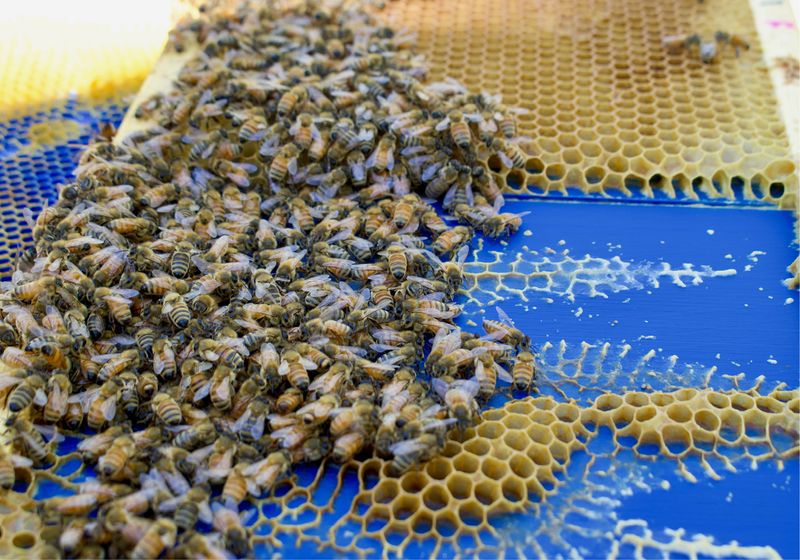Bees Strategize How to Build the Best Honeycomb

Researchers found that bees follow a flexible honeycomb blueprint, deviating if their provided foundation doesn’t suit their needs.
Honeybees are nature’s tiny workers. Their fuzzy yellow and black striped bodies buzz between flowers, picking up pollen for their hives. They’re renowned for making honeycomb, a mass of hexagonal cells built from beeswax, that acts as a nursery for their young and storage for honey and pollen.
Because it takes a village of bees to construct their hives, researchers at the University of Colorado Boulder investigated how bees adapt to different building conditions: Do honeybees build by the book, or do they rethink their architectural plans on the fly?
In a recent study, published in PLOS Biology, the researchers presented European honeybees with a 3D-printed foundation that had a hexagonal pattern already imprinted, but with a size different from that preferred by the bees.1 The bees adapted their building behavior to make their ideal honeycomb. These findings provide insight into the complex behavior of bees but also have implications for the design of bio-inspired engineering systems.
When provided a foundation with cells three times the bees’ preferred size, the bees follow a different blueprint and build smaller cells on the vertices of the provided pattern.
Golnar Ghalarooni-Vard, CC-BY 4.0
Bees are efficient, often constructing honeycomb simultaneously from multiple locations within the hive, which are later stitched together and adjusted for the size, shape, and arrangement of the hexagons.2 To test the bees’ adaptability, the researchers designed 3D-printed panels with different honeycomb cell sizes from 0.75 times smaller to three times larger than the average worker cell.
Over a 20-day period, the honeybee colonies went to work. Throughout this process, the researchers used X-ray microscopy to observe and quantify the bees’ building strategies. They found that honeybee colonies used at least three different techniques to adapt these foundations to a pattern more suitable to their needs.
When the starting honeycomb cells were too small for the worker bees, they would merge several cells to create overlying spaces of adequate size. If the cells were slightly larger, the bees built the honeycomb at an angle. This effectively shrunk the opening of the large cells while preserving depth for storage. Then, when the cells were three times bigger, the bees did not create even larger and more tilted cells; instead, they formed a two-layer structure using the borders of the plastic foundation as support.
These findings demonstrate that honeycomb construction is a highly dynamic and adaptable process. “These tiny builders seem to have an intuitive understanding of the physics behind collective construction. We’re just beginning to understand the rich set of strategies they use—tilting, merging, layering—to shape structures that meet their needs in remarkably adaptable ways,” said study coauthor biophysicist Rear peleg from the University of Colorado Boulder in a press release.




